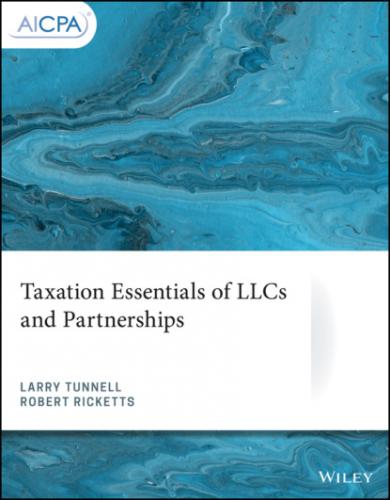Effect on the partners: Rights to partnership assets
A partner's share of partnership income or loss usually affects his or her rights to partnership assets. For example, if a partner contributes $12,000 to a partnership, and is allocated a $10,000 share of partnership income in the first year, he or she has a claim to $22,000 of the partnership's assets. If the partner receives no distributions in the current year, he or she expects to receive at least $22,000 in the future. Likewise, if the partner's share of partnership income or loss had been a ($2,000) loss, he or she would have a remaining claim against partnership assets of only $10,000 (the original $12,000 contribution, less the ($2,000) share of the partnership's operating loss). Note that the partner's claim against the partnership's assets is not the same as the partner's basis in his or her partnership interest. One reason these amounts differ is that the latter includes the amount the partner might have to pay should the partnership fail (that is, the partner's share of partnership liabilities).
The partner's share of the partnership's basis in partnership assets is called the inside basis. The partner's basis in the partnership interest, which includes the share of partnership liabilities, is referred to as the outside basis.
The partners' contributions to the partnership, and their rights to partnership assets, are reflected in the capital section of the partnership's balance sheets. For tax purposes the partnership maintains two sets of books and records. The first set reflects the partnership's tax basis in its assets and is used to determine the tax consequences of its transactions. The second set of records reflects the book value of the partnership's assets and is used to determine the economic consequences of partnership transactions.12
Dale and Roy formed a partnership early this year. Dale contributed $100,000 cash in exchange for a 50% interest in the partnership. Roy contributed land with a tax basis of $60,000 and a fair market value of $100,000 in exchange for the remaining 50% interest in the partnership. The partnership will establish two sets of books and records. The first will record the land contributed by Roy at its $60,000 tax basis (which becomes the partnership's tax basis in the property under Section 723), along with the $100,000 cash contribution by Dale. In addition, this balance sheet will record Dale's capital contribution at $100,000, and Roy's at $60,000. The second set of records maintained by the partnership will reflect the book values of the two partnership assets, as well as Dale's and Roy's relative interests in those assets. On this set of books, the land will be recorded at its date of contribution value of $100,000, as will the cash. Dale's and Roy's capital accounts will each be $100,000. Therefore, the partnership's initial balance sheets will be as follows (amounts in thousands):
| Section 704(b) | ||||
| Tax | Book | GAAP* | ||
| Cash | $100 | $100 | $100 | |
| Land | 60 | 100 | 100 | |
| Total Assets | $160 | $200 | $200 | |
| Capital, Dale | $100 | $100 | $100 | |
| Capital, Roy | 60 | 100 | 100 | |
| Total Liabilities and Capital | $160 | $200 | $200 | |
* The partnership's initial balance sheet, reported on Schedule L of Form 1065 should generally agree with the partnership's books and records, which should be based on generally accepted accounting principles (GAAP). However, as discussed in a subsequent course, there are certain occasions in which the partnership is allowed to “revalue” its book balance sheet for tax purposes. Such revaluations may result in the partnership maintaining three sets of books and records—one accounting for the tax basis of partnership assets, another accounting for the Section 704(b) book value of those assets, and a third accounting for the GAAP book value of those assets.
Interpretation of the balance sheets is straightforward. The tax balance sheet indicates that the partnership has an aggregate basis in its assets of $160,000. Dale contributed $100,000 of this, and Roy contributed $60,000. Therefore, Dale stands to lose $100,000, although Roy stands to lose only $60,000, measured in historical cost terms. (Although Roy stands to lose $100,000 economically, $40,000 of this loss would be an opportunity loss.) In contrast, review of the book balance sheet indicates that the partnership has total assets with a market value (at date of contribution) of $200,000, of which $100,000 would go to Roy and $100,000 to Dale upon liquidation.
As illustrated in the previous example, capital accounts are maintained separately for each partner in the partnership. The capital account is increased by net contributions (that is, net of debt) to the partnership, and by the partner's share of partnership net income. It is decreased by net distributions received from the partnership, and by the partner's share of net partnership losses (if any). Therefore, the tax capital accounts summarize the basis of what each partner has invested in the partnership (tax balance sheet). The book capital accounts summarize what each partner is entitled to receive from the partnership at liquidation (book balance sheet).
Lisa and Bill formed a partnership to purchase an office building. Lisa contributed $50,000 cash to the partnership in exchange for a 50% interest therein. Bill contributed land with a tax basis of $25,000 and a fair market value of $50,000 for the remaining 50% interest. The partnership then borrowed $400,000 and purchased an office building for $450,000. The partnership's balance sheets will look as follows immediately after formation:
| Section 704(b) | ||
| Tax | Book | |
| Land | $25,000 | $50,000 |
| Building | 450,000 | 450,000 |
| Total assets | $475,000 | $500,000 |
| Mortgage, Building | $400,000 | $400,000 |
|
Capital, Lisa
|
